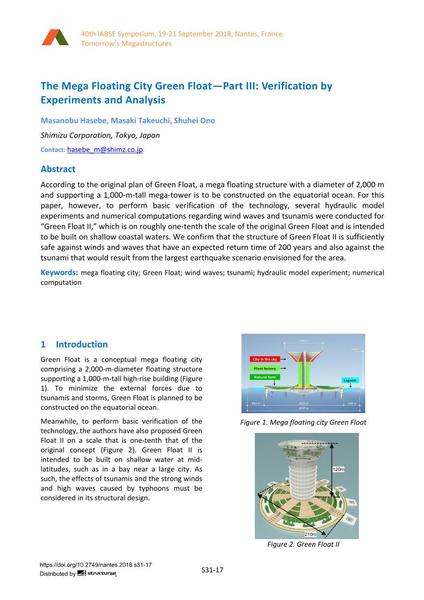The Mega Floating City Green Float—Part III: Verification by Experiments and Analysis

|
|
|||||||||||
Bibliographic Details
| Author(s): |
Masanobu Hasebe
(Shimizu Corporation, Tokyo, Japan)
Masaki Takeuchi (Shimizu Corporation, Tokyo, Japan) Shuhei Ono (Shimizu Corporation, Tokyo, Japan) |
||||
|---|---|---|---|---|---|
| Medium: | conference paper | ||||
| Language(s): | English | ||||
| Conference: | IABSE Symposium: Tomorrow’s Megastructures, Nantes, France, 19-21 September 2018 | ||||
| Published in: | IABSE Symposium Nantes 2018 | ||||
|
|||||
| Page(s): | S31-17 | ||||
| Total no. of pages: | 8 | ||||
| DOI: | 10.2749/nantes.2018.s31-17 | ||||
| Abstract: |
According to the original plan of Green Float, a mega floating structure with a diameter of 2,000 m and supporting a 1,000-m-tall mega-tower is to be constructed on the equatorial ocean. For this paper, however, to perform basic verification of the technology, several hydraulic model experiments and numerical computations regarding wind waves and tsunamis were conducted for “Green Float II,” which is on roughly one-tenth the scale of the original Green Float and is intended to be built on shallow coastal waters. We confirm that the structure of Green Float II is sufficiently safe against winds and waves that have an expected return time of 200 years and also against the tsunami that would result from the largest earthquake scenario envisioned for the area. |
||||
| Keywords: |
tsunami mega floating city Green Float wind waves hydraulic model experiment numerical computation
|
||||
